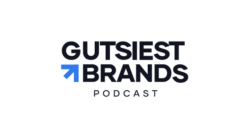New product development is critical to the success of businesses and brands in the Financial Services (FS) industry. Being on top of consumers’ emerging wants and needs, or responding to new offerings from the competition, is key to maintaining relevance. And CMOs know it. In fact, a recent survey from Gartner found that 45% of CMOs planned to introduce new products or services as their primary strategy to fuel growth in 2021.
However, there are a lot of resources required to bring new products and services to market¬—making it a risky proposition in the absence of proper planning. How can you ensure your next FS NPD initiative is a success? These three questions will help shape your approach and identify the proper tools and methods needed—regardless of where you stand in the development cycle.
What are the objectives for your NPD effort?
It sounds simple at face value, but clearly defining the goal of your NPD effort will enable you to determine the best research tools and methods for your needs. Many new products and services operate as extensions of existing offers, and, thus, are primarily aimed at short-term revenue maximization. Other new product efforts may be designed for long-term staying power or developing an entirely different business opportunity. Knowing where you stand will help frame your choices for gathering data.
Some other questions to consider:
• What are the strengths of your current portfolio? Will existing services suffer from the introduction of new ones? How will existing customers behave?
• Have the needs of consumers, or the relative importance of them, changed with evolving behaviors?
• Taking the long view, which areas of the portfolio are you updating or replacing? Are the existing products and services as relevant and appealing as they once were, and do they still meet customer needs?
• As more services move to digital, are they being adapted the right way? To what extent are these new services inclusive for all customer types?
• What is the current competitive context? Moving quickly is often the key to outmaneuvering your competitors.
What data is needed to answer those objectives?
Wherever you are in the development process, there could be more than one relevant solution from a research perspective. And each can provide answers on different aspects of your initiative. Ultimately, that breadth of learning provides you with more and richer data, which, in turn, enables evidence-based decision-making.
That evidence-based decision-making doesn’t need to come at the expense of speed, either. Modern automated technologies have made it possible to get high-quality data without sacrificing time. To that point, we’ve had cases where 60+ claims were being tested in multiple markets, and the turnaround time for results was less than 24 hours.
What decisions will you make with that data?
In the early stages of the new product development cycle, you may be looking for solutions that help you prioritize and focus on the right needs or ideas. If you’re closer to taking that product or service to market, you’re probably looking to assess potential. That’s not to suggest that NPD is a linear process. In fact, you may choose to re-work or re-validate certain stages, such as when testing new copy or creative. However, all of this should be considered when determining your research methods and identifying research tools. Put simply: what is the critical information you need to validate your plan, and what are your nice-to-haves?
Putting the NPD framework in action in Financial Services
To understand how you can put this framework into action, take a look at this example of a global home insurer that approached Toluna in an effort to drive NPD and the future of the business.
What are your objectives? This global home insurer was struggling to find a way to ensure that the business was moving forward with the right innovations and supplemental propositions. As a result, their objective was to develop an iterative approach to exploring the need for a new service.
What data is needed to answer those objectives? After an initial survey to confirm the incidence rate of their target audience within the population, they leveraged qualitative Live Discussions to understand the needs and behaviors of their audience, as well as gauge reactions to concepts. This was followed by robust quantitative testing of the concepts and glean other insights needed for decision-making.
What decisions will you make with that data? Using the Toluna Start platform, they were able to gather holistic feedback under tight timelines. Stakeholders across the business were able to quickly understand feedback in real-time, which gave them the confidence to not proceed with what would have been a significant investment that ultimately would have not met consumer needs. Further, the efficiency of solutions, speed of access to panel, and access to Toluna’s financial services research expertise led them to commission an online Community that continues to provide ongoing feedback on new innovations and supplemental propositions today.
Keeping these questions in mind throughout the NPD cycle will enable you to derive productive, actionable use of all the data and insights that a robust research plan can provide.
Fuel success with an agile approach to New Product Development research. Download our Financial Services-focused eBook and compare your approach to New Product Development insights with industry benchmarks here.



 Back to Blog
Back to Blog

